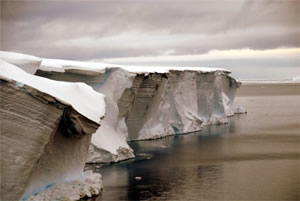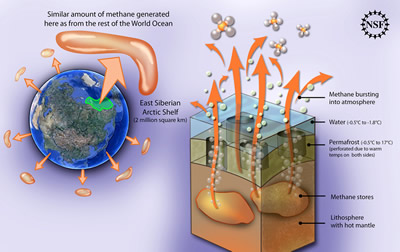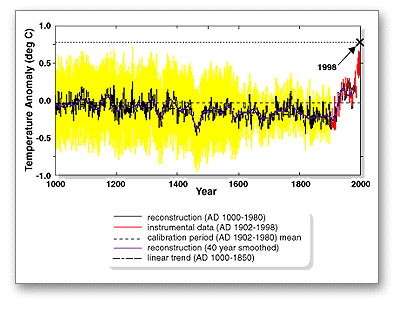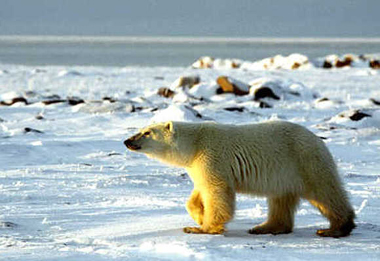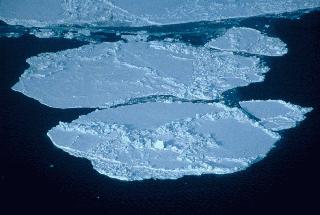
NASA
Related links:
Animation showing Annual Variation of Sea Ice Extent in the Arctic
Animation showing Annual Variation of Sea Ice Extent in the Antarctic
Interactive: Compare Images of Arctic Sea Ice Extent Side-by-side
Interactive: Compare Images of Antarctic Sea Ice Extent Side-by-side
Activity: Graphing Sea Ice Extent in the Arctic and Antarctic
Sea Ice in the Arctic and Antarctic
Sea ice is frozen seawater. It can be several meters thick and it moves over time. Although the salts in the seawater do not freeze, pockets of concentrated salty water become trapped in the sea ice when it first forms. The pockets of salty water can work their way out of the sea ice over a few years. During the summer months much of the sea ice melts and during the winter months it forms again. Some sea ice stays around all year long.
The Arctic Ocean has a large amount of sea ice floating at its surface, especially in winter. Sea ice is very important for the people and animals that live in the Arctic region. Animals like polar bears live on the sea ice and find their food in the surrounding and underlying ocean. Marine life exists under the Arctic sea ice too. Over the past few decades, more and more of the sea ice has been melting in the summer as Earth’s climate warms. Scientists predict that within the next 40 years with continued global warming, there will be no sea ice in the Arctic in the summer months. Ice thickness has also been decreasing.
In the South Polar Region, there is evidence that sea ice is important for the breeding cycle of certain penguin species. Emperor penguins breed on sea ice. One of the most northerly colonies of Emperor penguins, the one where the documentary “March of the Penguins” was filmed, has declined over the past few decades, probably because of warming temperatures, which cause the sea ice to melt and break apart earlier in the spring, before the chicks are ready to fledge. Melting sea ice might have some benefit to Adelie penguins. Adelie penguins build nests made of pebbles on land. In search of food, they travel over sea ice that is attached to the shore, called fast ice, to get to the ocean, and then bring seafood back to their hungry chicks on land. With less sea ice, the journey to the ocean to find food becomes shorter. However, Adelie penguins are adapted to the cold conditions. The benefit of a shorter trip to the ocean is overshadowed by the harm of warmer temperatures. In the northern part of the Antarctic Peninsula, the warmest part of Earth’s coldest continent, the Adelie penguin colony is declining rapidly. In this area, sea ice used to be common, but now is absent, even in winter. The penguin nests made of rocks on the Antarctic Peninsula have been abandoned. The warming climate has restricted the Adelie penguins to colder areas further south.








